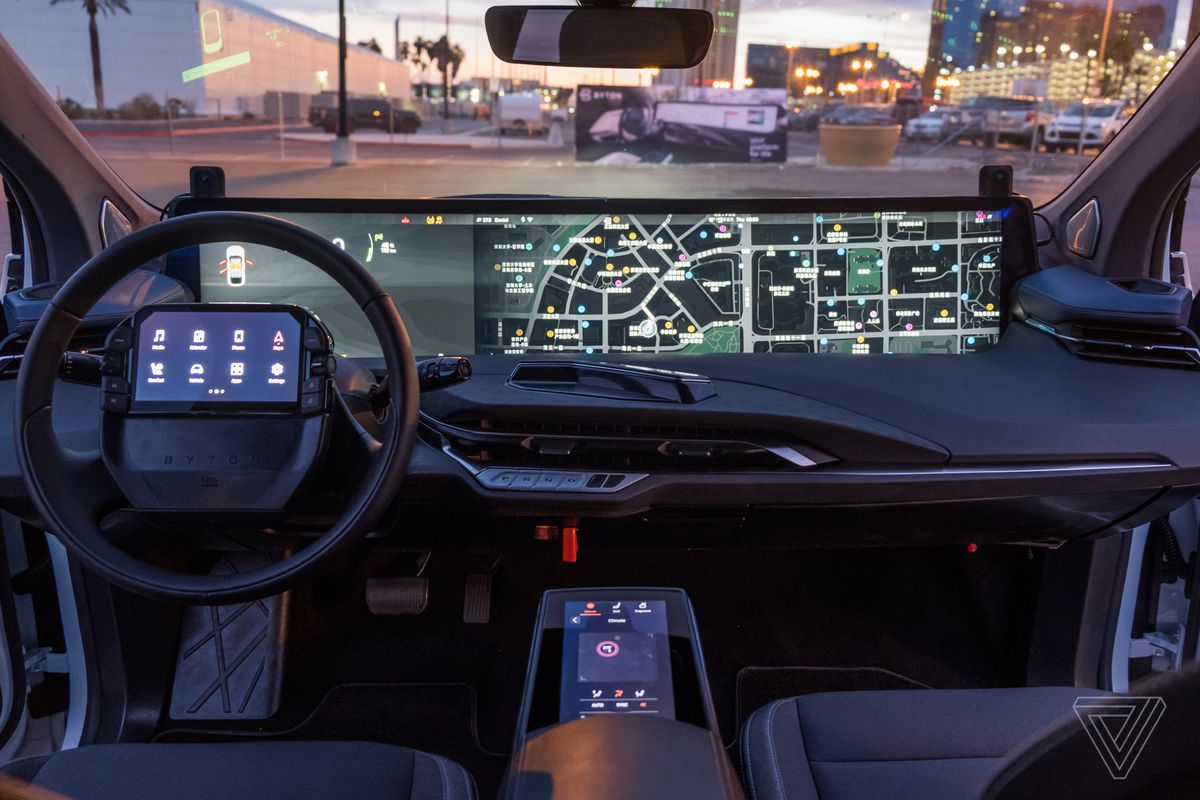A car with a 48-inch screen on the dashboard sounds like a distracted driving nightmare, and to be honest, that could likely wind up being the case. But two years after Byton teased the idea in a concept car that debuted at the 2018 Consumer Electronics Show, the Chinese EV startup returned to CES and offered a chance to drive its electric SUV in an effort to prove that its headline-grabbing screen may not be as problematic as it seems.
On Wednesday evening, I spent 15 or so minutes behind the wheel of the second preproduction unit of Byton’s car — the M-Byte SUV — driving around a parking lot next to Bally’s Casino. It wasn’t enough time to walk away with comprehensive feelings about how the car drove, and the interior and software were in too unfinished a state for me to gather any more than the most basic impressions.
:no_upscale()/cdn.vox-cdn.com/uploads/chorus_asset/file/19588870/byton_m_byte_0326.jpg)
I can say the 48-inch screen stole my attention less than I thought it would. Part of that has to do with the fact that it’s designed so that it looks like it’s sinking into the dashboard. This made it easy for me to literally look past it while driving (though I am six feet tall). If anything, I found the smaller touchscreen that’s embedded in the steering wheel to be more distracting since it feels somewhat unnatural to have a screen that close to my face that I’m not actively holding.
Another thing that helped is that Byton made some design choices that mitigate the main display’s presence. The user interface is divided into sections that can be customized with different widgets, but each one of these sections can also be turned off. The overall interface has also been designed to be quite minimalist. Videos can’t be played while in motion, and even those widgets won’t update until the car is stopped, too.
“We’re focused on making it less distracting to the driver,” Jeff Chung, Byton’s vice president of digital engineering, told me earlier this week. ”We do a lot of user testing to understand the cognitive load on each driver or passenger, with people inside the company and external and all different geographies. And even though we have a big display, you’ll notice we’re trying to take a more simplistic approach.”
:no_upscale()/cdn.vox-cdn.com/uploads/chorus_asset/file/19588872/byton_m_byte_0293.jpg)
Whether the 48-inch screen is necessary is an entirely different issue. I mean, of course it’s not necessary, regardless of how much Byton (and companies like it) push the idea that this kind of technology helps turn a car into a connected thing that can help “give users time back,” as Chung put it. The display might make more sense in a world of fully autonomous vehicles, but its existence, let alone its size, isn’t crucial to the basic function of modern cars.
But while Byton’s massive screen may look and feel like an outlier, the startup is far from the only company trying something like this. Tesla has built its brand around the big screens in its cars. Other startups like Byton are following in its big-screen footsteps. The car that Sony unveiled this week had a similarly dashboard-spanning set of screens. Hell, even Cadillac’s new Escalade will feature a 38-inch dashboard screen.
In that sense, it feels like a fool’s errand to rely on Byton alone to say whether we should put tech like this in our vehicles when that’s really the kind of question we’d be better off answering ourselves.
